Toward a Unified Theory of the New York Cheesecake
Few things bring a New Yorker more pleasure than arguing—whether it’s about the specific borders of neighborhoods or the fastest subway route or how great or terrible Times Square used to be. But perhaps no subject is as pleasurably divisive as food.
What makes a proper New York bagel? What is the ideal bodega bacon-egg-and-cheese-on-a-roll? Which Chinatown has the best dim sum?
And then there’s the dessert king of New York, the cheesecake.
Arguably (of course), no dessert is more closely associated with the city. The New York cheesecake, constructed of that New York native, cream cheese, along with heavy cream or sour cream, eggs, vanilla, and sugar, baked in a springform pan on a graham cracker crust, is unassailably delicious. But looking at it…this is not really a cake, is it? Is it a pie? A tart? This should be of paramount concern to New Yorkers and those who tolerate them: what, exactly, is a cheesecake?

As fans of the Great British Bake-Off (or the Great British Baking Show, as it’s been retitled in the U.S.) know, the names of desserts are anything but constant. A pudding, though it means one thing in the U.S., means about 11 different things in the U.K. A biscuit is a cookie is a cracker is a mutant scone.
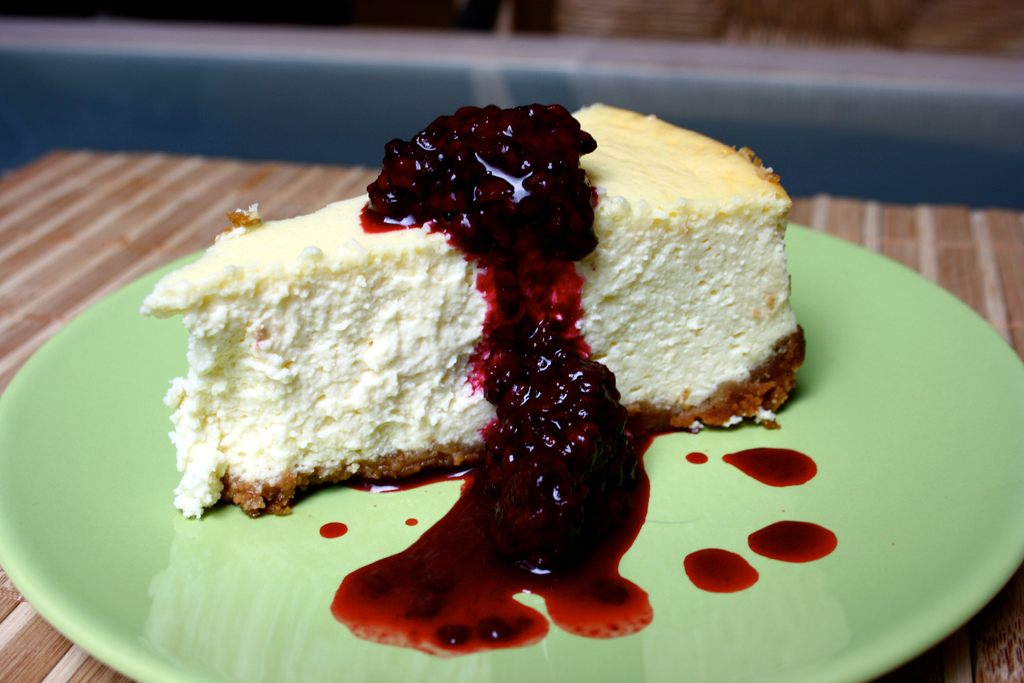
New York cheesecake typically consists of a graham cracker crust underneath a filling of cream cheese, heavy cream or sour cream, eggs, vanilla, and sugar. (Photo: sabotrax/flickr)
The various possible categories the cheesecake could fall into are no different. For the purposes of argument, I have selected a few likely ones: the cheesecake could be a cake (look, it’s in the name, we have to consider it), it could be a pie, it could be a tart, a torte, an icebox, a custard, or we could decide it does not fit adequately in any of these categories and we could declare that the cheesecake is its own category. But first, we have to define exactly what a cheesecake is, which requires we know where it comes from.
The first recorded cheesecake recipe comes from the ancient Greek writer Athenaeus, who composed a simple recipe as follows: “Take cheese and pound it till smooth and pasty; put cheese in a brazen sieve; add honey and spring wheat flour. Heat in one mass, cool, and serve.” Apparently this cheesecake was served to athletes at the very first Olympic Games, in 776 BC.
But this is not really what we think of when we think of a cheesecake; a mixture of cheese, honey, and flour would lead to a phenomenally, almost disturbingly, heavy glob of a cheesecake, more similar to a British boiled pudding than anything else.
A slightly more modern version comes from around 1390, in one of the very first cookbooks in the English language (well, Middle English): Forme of Cury, commissioned by King Richard II. This recipe is for a dish known then as sambocade. Here’s the original Middle English:
“Take and make a crust in a trap & take cruddes and wryng out þe wheyze and drawe hem þurgh a straynour and put hit in þe crust. Do þerto sugar the þridde part, & somdel whyte of ayren, & shake þerin blomes of elren; & bake it vp with eurose, & messe it forth.”
Basically, this is calling for a mixture of wrung-out cheese curds (this would be similar to ricotta), egg whites, sugar, dried elderflowers (seen as medicinal at that time), and rosewater to be placed in a pie crust and baked. Now this is more like it!
But from this point, the concept of a cheesecake splintered in all directions. “Modern cheesecakes came about with the invention of cream cheese,” says Melanie Underwood, the author of Making Artisan Cheesecake and an instructor at the Institute of Culinary Education. Cream cheese is an oddball in the cheese world; not matured at all, it’s unlike other soft cheeses like brie, but given its incredibly high milk fat content, it’s not very much like ricotta either. (You could actually argue that ricotta isn’t a cheese at all, but more like a byproduct of the cheese-making process.)

A depiction of Olympia in Ancient Greece. Apparently a version of a cheesecake was served at the first Olympus Games in 776 B.C.
Cream cheese was invented in 1872 in New York by an American dairy farmer named William Lawrence. Lawrence bought a factory that had previously manufactured a soft cheese called Neufchâtel, but decided to try to make the normally slightly sharp cheese a bit milder and creamier. So he added heavy cream to the recipe and decided to eat it fresh, without any aging at all. It was originally marketed as Neufchâtel And Cream Cheese, and eventually, probably because it’s a pain to keep typing the accent in Neufchâtel, the first part was dropped and we were left with simply cream cheese.
But cream cheese is not necessarily an essential part of all cheesecakes, merely the New York version. There are many different cheesecake recipes across the globe. The main differences come in the type of cheese used, whether the cheesecake is baked, what sort of crust is used, and what the thickener is.
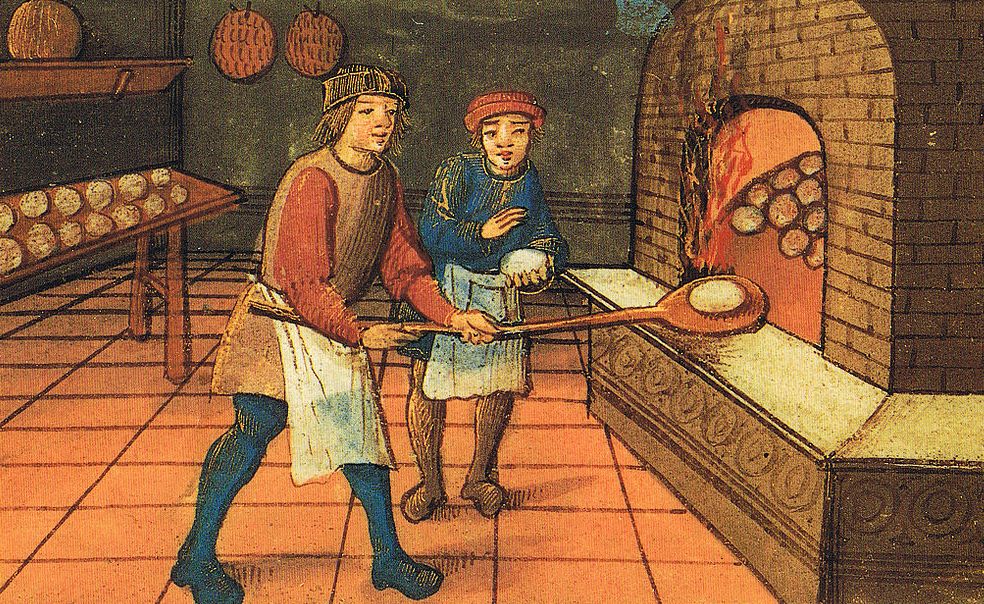
The medieval cookbook Forme of Cury, printed around 1390, also had a cheesecake-like recipe. (Photo: Public Domain/WikiCommons)
For the classic New York cheesecake, that would be, in order: mostly cream cheese, it is baked, graham cracker or other pulverized cookie, and eggs.
In other parts of the world, these all change. In Germany, the cheese is quark, a peculiar cheese made with soured milk that tastes almost like Greek yogurt, the cheesecake is not baked, and the crust is a normal pie or pastry crust. The Dutch cheesecake is very much like the German, but the crust is of crushed speculaas cookies, which are similar to gingersnaps. In Italy, the cheese is ricotta, or sometimes mascarpone, and though it is thickened with egg and baked, it differs from other cheesecakes in that it often has no crust at all. In the U.K., the filling is cream cheese and heavy cream, but the cheesecake is not baked, though it is sometimes thickened with gelatin. The U.K. version’s crust, like the Dutch, uses the local favorite cookie variety, in this case often a digestive biscuit, which Americans would recognize as a boring flavorless brown cookie.

A crucial ingredient for cheesecake, at least a New York cheesecake cream cheese. (Photo: Mike Mozart/flickr)
The Japanese cheesecake is perhaps the weirdest: soft, fluffy, and cake-like, it’s made with cream cheese mixed with a cornstarch slurry and often whipped egg whites before being baked. Because it’s so light and delicate, it can be baked in a normal pie tin, not a springform pan that’s a necessity for the heavier styles of cheesecake.
So! That’s what a cheesecake is. Now what are the definitions of these desserts?
A cake can be made in about a billion different ways, but as a very general rule, in the U.S., a cake is assumed to be a sweet bread-like baked product constructed usually and mostly of butter, sugar, flour, and egg. It does not have a crust, but may or may not have a topping or a filling.
Is cheesecake a cake? No. A cheesecake does have a crust, and its primary ingredient is a form of cheese, not flour.
A torte differs from a cake in that the primary ingredient is not flour, but either pulverized nuts or breadcrumbs. Tortes are usually made in a springform pan, and tend to be dense and much shorter than a cake, because they don’t rise as much.
Is cheesecake a torte? No. We’re getting closer; a cheesecake is made in a springform pan, has a dense texture, and is about the same height as a torte, but the primary ingredient of a torte is never cheese, and tortes do not have crusts.
So we’ve narrowed things here down to pie and tart. These are very confusing terms; as categories they overlap and can often be vague. Some tarts could certainly be described as pies, and some pies can certainly be described as tarts.
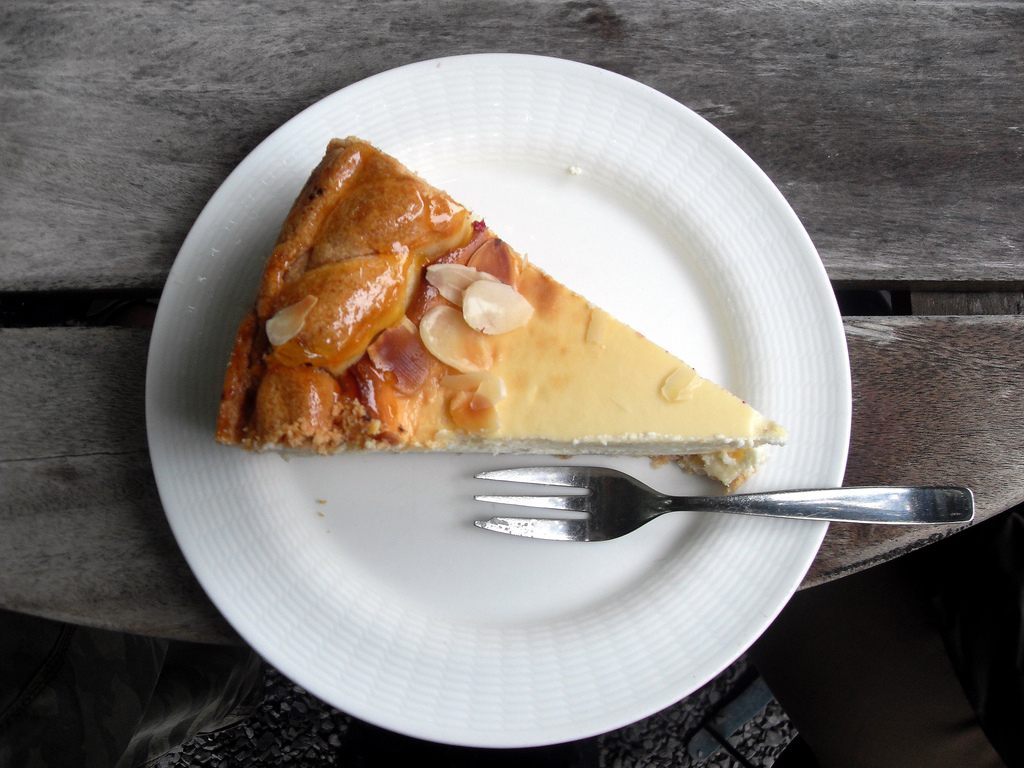
A slice of German Käsekuchen - cheesecake. (Photo: Mohamed Yahya/flickr)
The term pie is one of the most ambiguous in the food world. I can make no more specific definition of a pie than “some sort of food which has some sort of crust.” A pie can be savory, as in a chicken pot pie; it can have both a top and bottom crust, as in an apple pie; it can consist of simply a bottom crust, as in a key lime pie; and it can be filled with anything from meat to custard to vegetables to fruits to basically just sugar.
A tart differs from a pie in that a tart never has a top crust. So a dish like a key lime pie, though it has “pie” in the name, would also fall into the tart category. A classic apple pie is a pie but not a tart. From there we can go to rules which usually apply to either a tart or a pie, though there will always be infuriating exceptions.
One of those: a tart typically has a thicker crust that, around the sides, stands up vertically. A tart can almost always stand freely when removed from its tin; this is not always the case for a pie. A pie more often has a sloped, diagonal side, and is often served directly from the tin, because to remove it from the tin would result in the pie falling down. “A cheesecake stands on its own without the help of a pan,” says George Geary, author of The Cheesecake Bible, “[while] a cheese pie will still have the pan around it.” A cheesecake almost always has a crust on the bottom, and sometimes, but not always, has a crust on the sides. It does not, however, have a crust on top.

Cheesecake on display in London. (Photo: Jessica Schwärzel/flickr)
From this definition I propose that the cheesecake is not a pie but a tart.
Further, I propose that we can come up with the closest relatives of the cheesecake by deciding precisely what sort of tart it is. “For me, cheesecake is more of a custard, especially the baked [version],” says Underwood. “It is usually baked in a water bath, like custard.” Underwood is speaking specifically about the New York style of cheesecake, which is thickened with egg. A custard typically refers to an egg-thickened mixture of milk or cream, but I can get behind her assertion that cream cheese thickened with egg will qualify. It’s a strange custard, but yes: the New York cheesecake is a custard tart.
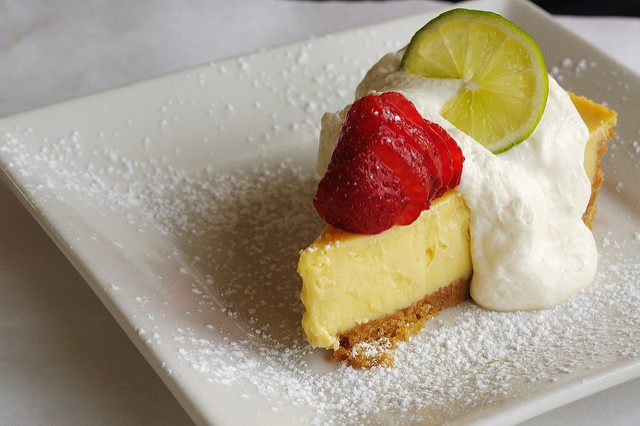
Key Lime Pie: a tart and a pie, but definitely not a cheesecake. (Photo: Ralph Daily/flickr)
The no-bake varieties of cheesecake, which are typically thickened with gelatin, are something different. I’d classify these as an icebox pie, similar to chocolate pudding pie and the un-baked versions of certain fruit pies like lemon meringue and key lime. These non-custard-tart cheesecakes are not as good as the true cheesecake. Some other types of cheesecake, for example the Japanese variety, are also not custard tarts. Given the way it rises and its reliance on egg whites, I would say the Japanese cheesecake is, incredibly, a cake, similar to other egg-white-rising cakes like the angel food cake.
Other custard tarts, now that we know the New York cheesecake is a custard tart, show distinct similarities with the cheesecake. Buttermilk pie. The Portuguese egg tart pastel de nata. Sweet potato pie. Pumpkin pie, for god’s sake. Join with your brethren, newly discovered relatives of the cheesecake. You are inextricably linked as custard tarts. Not that we expect this extremely correct conclusion to stop New Yorkers from arguing about what, exactly, a cheesecake is.
Gastro Obscura covers the world’s most wondrous food and drink.
Sign up for our regular newsletter.










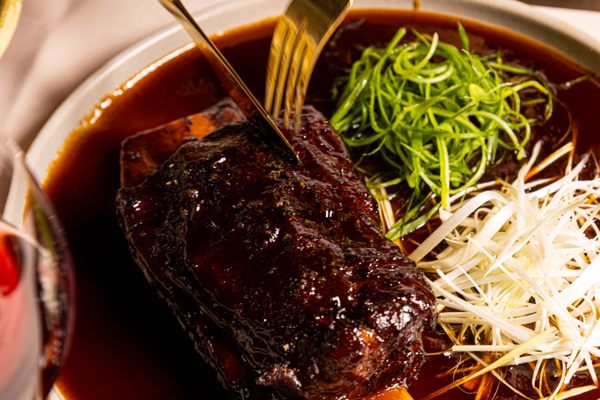










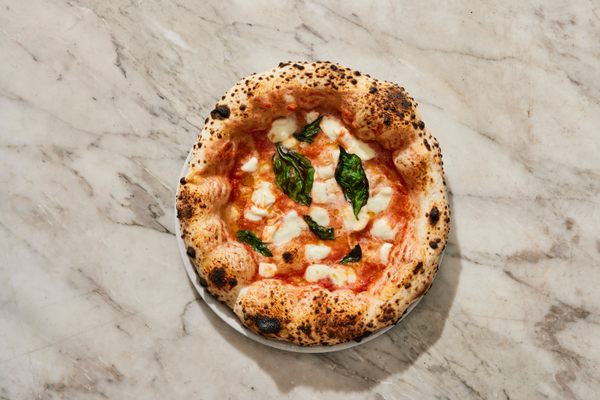


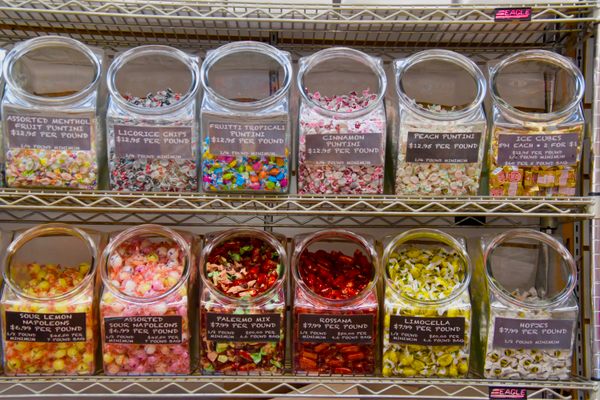

Follow us on Twitter to get the latest on the world's hidden wonders.
Like us on Facebook to get the latest on the world's hidden wonders.
Follow us on Twitter Like us on Facebook